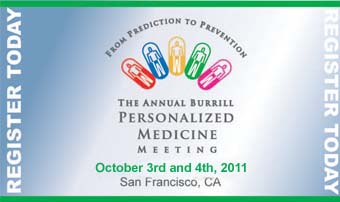page 2 of 2
I have advised my patients that one of the hardest parts of the disease was accepting the diagnosis. Once they got through that, they should enjoy a good quality of life. Although there is no treatment that has proven to meaningfully alter the course of their disease, we can treat most symptoms. And since much is known about the mechanisms that cause progression, we can try treatments that are thought to inhibit the mechanisms, including experimental drugs if patients are interested in participating in a clinical trial.
At some point during the first few visits, when they bring the topic up or seem ready, we discuss how long they might expect to live. Survival averages three or four years after the onset of symptoms, but it varies widely, with about 10 percent of patients living more than 10 years. I have always advised that they should prepare for the worst and get their affairs in order, but that they should hope for the best and do something fun every day, focusing each day on the things that they can still do. Death is almost always peaceful, particularly if their hospice is working with our multidisciplinary ALS team in managing their symptoms. They can live longer, up to more than 20 or more years longer, if they choose to use a ventilator to keep themselves breathing. In making this decision, they should focus first on the issue of quality of life on a ventilator.
I found that accepting the fatal diagnosis was easier than I expected. I think this is because the awareness of the diagnosis occurred to me gradually, and because I made the initial diagnosis myself. I was also quite familiar with the diagnostic process and knew that all reasonable alternatives had been excluded, even though ALS has not occurred before in my family. This was not the situation for my wife and my young adult children. I had shared with them my suspicion that I had ALS months earlier, but my wife and close doctor friends tended to think that my suspicion was strongly influenced by my work with so many ALS patients. They had the typical reaction, when my neurologist agreed with my diagnosis—they were surprised and devastated.
I have enjoyed a good quality of life since my diagnosis, even now that my breathing has decreased so much that I am under hospice care. Soon after my diagnosis, I became anxious a few times when thinking about how disabled I would become. My anxiety was relieved when I followed my own advice. I focused on what I was able to do today and realized that more disability would come on gradually, meaning that I would have time to adjust to it. Over time I discovered this to be true. My favorite activities once included backpacking, hiking, jogging, and mountain biking. I now ride my electric wheelchair on trails through the forest or to the beach. I still exercise daily. Initially I rode a stationary bike. Now I drive my wheelchair up to a motorized pedaling machine that assists my efforts. I still go to movies every week and to concerts and plays occasionally. I use my computer with a modified mouse and special programs that enabled me to write this piece. The highlights of my weeks are visiting with family and friends. I can no longer speak, so I usually express myself using a laser light attached to my glasses and pointing to a letter board. Like Stephen Hawking, I have a laptop computer that mounts on my wheelchair and is programmed with my voice.
I had an advanced directive and will for more than a decade before my diagnosis. When my neurologist confirmed ALS, my wife and I updated all legal documents. I formalized my intention to not be placed on a ventilator, the option chosen by 90 percent of patients. Surprisingly, depression is not common in ALS, even at the end of life. When present, it responds well to antidepressant drugs. I have not been depressed. Existential despair is the most common symptom for which we have no medical treatment. My spiritual beliefs are strong, so I face a peaceful death with equanimity and with the knowledge that I have had time to prepare for the welfare of my wife and children as well as possible.
Richard K. Olney, M.D., is a Professor Emeritus of Neurology at the University of California, San Francisco and the Founding Director of the ALS Treatment and Research Center at UCSF. He lives in Marin County, California.
1 2
February 08, 2008
http://www.burrillreport.com/article-when_the_doctor_becomes_the_patient.html





.gif)
